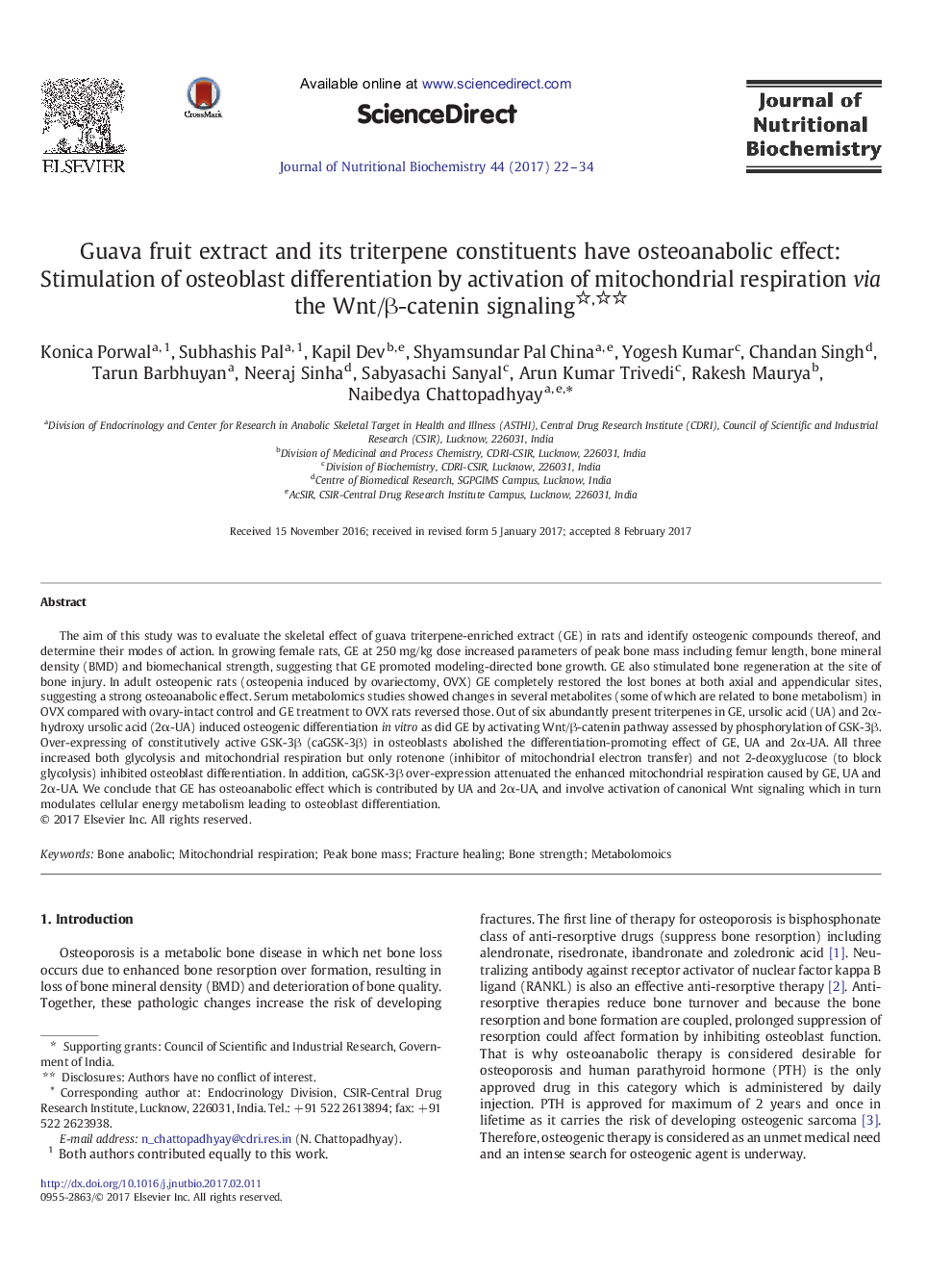| Article ID | Journal | Published Year | Pages | File Type |
|---|---|---|---|---|
| 5512854 | The Journal of Nutritional Biochemistry | 2017 | 13 Pages |
The aim of this study was to evaluate the skeletal effect of guava triterpene-enriched extract (GE) in rats and identify osteogenic compounds thereof, and determine their modes of action. In growing female rats, GE at 250 mg/kg dose increased parameters of peak bone mass including femur length, bone mineral density (BMD) and biomechanical strength, suggesting that GE promoted modeling-directed bone growth. GE also stimulated bone regeneration at the site of bone injury. In adult osteopenic rats (osteopenia induced by ovariectomy, OVX) GE completely restored the lost bones at both axial and appendicular sites, suggesting a strong osteoanabolic effect. Serum metabolomics studies showed changes in several metabolites (some of which are related to bone metabolism) in OVX compared with ovary-intact control and GE treatment to OVX rats reversed those. Out of six abundantly present triterpenes in GE, ursolic acid (UA) and 2α-hydroxy ursolic acid (2α-UA) induced osteogenic differentiation in vitro as did GE by activating Wnt/β-catenin pathway assessed by phosphorylation of GSK-3β. Over-expressing of constitutively active GSK-3β (caGSK-3β) in osteoblasts abolished the differentiation-promoting effect of GE, UA and 2α-UA. All three increased both glycolysis and mitochondrial respiration but only rotenone (inhibitor of mitochondrial electron transfer) and not 2-deoxyglucose (to block glycolysis) inhibited osteoblast differentiation. In addition, caGSK-3β over-expression attenuated the enhanced mitochondrial respiration caused by GE, UA and 2α-UA. We conclude that GE has osteoanabolic effect which is contributed by UA and 2α-UA, and involve activation of canonical Wnt signaling which in turn modulates cellular energy metabolism leading to osteoblast differentiation.
